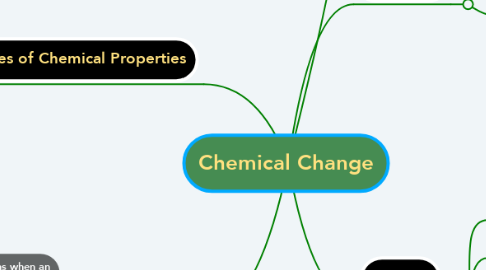Chemical Change
by Mr. Genji


1. Examples of Chemical Properties
1.1. Toxicity
1.1.1. How dangerous the substance can be.
1.2. Flammability
1.2.1. How easily it get set fire.
1.3. Coordination Number
1.3.1. Number of atoms that are bonded.
1.4. Chemical Stability
1.4.1. The chemical in its natural state
1.5. Combustibility
1.5.1. Combustibility is defined as the chemical property of materials to react with oxygen while emitting radiant energy. The combustibility of a material is a requirement for it to burn.
1.6. Enthalpy of formation
1.6.1. the heat released or absorbed during the formation of a pure substance
1.7. Solubility
1.7.1. Whether a solution can dissolve in a solvent
